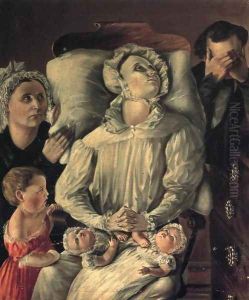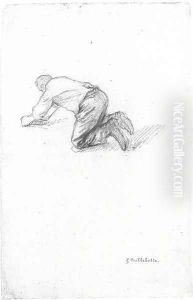Jarvis Hanks Paintings
Jarvis Hanks was an American artist and craftsman born in the late 18th century, a period marked by the early stages of the United States' formation and the gradual emergence of a distinctly American identity in the arts. Born in 1785, Hanks' life and career were set against the backdrop of a nation finding its feet politically, socially, and culturally. Despite the lack of extensive documentation on his early life, it is known that Hanks was active in the early 19th century, a time when American art was heavily influenced by European styles but was beginning to show signs of its unique character.
Hanks was primarily known for his work as a clockmaker and a painter, showcasing the multifaceted nature of craftsmanship and artistry during this era. His clocks, often featuring intricate designs and a high level of craftsmanship, were sought after items in their time and remain valued by collectors today. These works not only highlight his skill as a craftsman but also serve as a window into the aesthetic preferences and technological advancements of early 19th-century America.
As a painter, Jarvis Hanks contributed to the early American visual culture through portraits and possibly landscape paintings, though fewer of his works in this medium have been definitively attributed to him. The style and subjects of his paintings would have reflected the broader trends of American art at the time, which was increasingly focused on national themes and the exploration of America's natural landscapes and peoples.
Despite his contributions to American art and craftsmanship, Jarvis Hanks remains a relatively obscure figure, with limited records of his life and works. He passed away in 1832, leaving behind a legacy that, while not widely recognized, offers insight into the diverse skill set of early American artists and craftsmen. Hanks' life and work exemplify the blend of European influences and emerging American sensibilities that characterized the early 19th century, making his contributions a valuable part of the story of American art's evolution.

